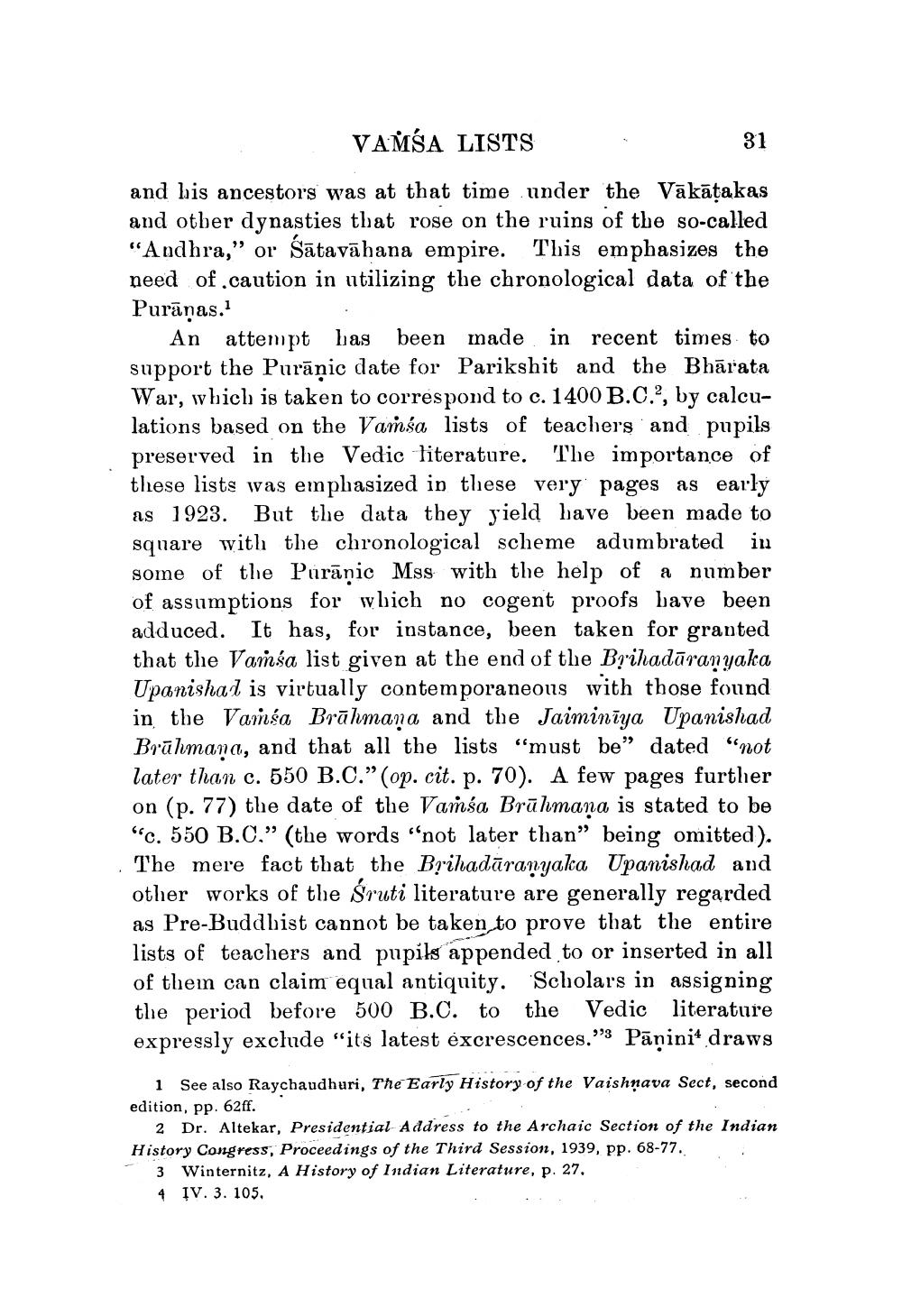________________
VAMSA LISTS
31
and his ancestors was at that time under the Vākāțakas and other dynasties that rose on the ruins of the so-called "Andhra," or Śātavāhana empire. This emphasizes the need of.caution in utilizing the chronological data of the Purānas.1
An attempt has been made in recent times to support the Purāṇic date for Parikshit and the Bhārata War, which is taken to correspond to c. 1400 B.C.?, by calculations based on the Vamśa lists of teachers and pupils preserved in the Vedic literature. The importance of these lists was emphasized in these very pages as early as 1923. But the data they yield have been made to square with the chronological scheme adumbrated in some of the Purāņic Mss with the help of a number of assumptions for which no cogent proofs bave been adduced. It has, for instance, been taken for granted that the Vamsa list given at the end of the BỊihadāranyaka Upanishad is virtually contemporaneous with those found in the Vamsa Brāhmana and the Jaiminīya Upanishad Brālumana, and that all the lists “must be" dated "not later than c. 550 B.C.” (op. cit. p. 70). A few pages further on (p. 77) the date of the Vamśa Brūlimana is stated to be “c. 550 B.C.” (the words "not later than” being omitted). The mere fact that the Bțihadāranyaka Upanishad and other works of the Śruti literature are generally regarded as Pre-Buddhist cannot be taken to prove that the entire lists of teachers and pupils appended to or inserted in all of them can claim equal antiquity. Scholars in assigning the period before 500 B.C. to the Vedic literature expressly exclude “its latest excrescences." Pāṇini* draws
1 See also Raychaudhuri, The Early History of the Vaishnava Sect, second edition, pp. 62ff.
2 Dr. Altekar, Presidential Address to the Archaic Section of the Indian History Congress, Proceedings of the Third Session, 1939, pp. 68-77.
3 Winternitz, A History of Indian Literature, p. 27, 4 IV. 3. 105.




